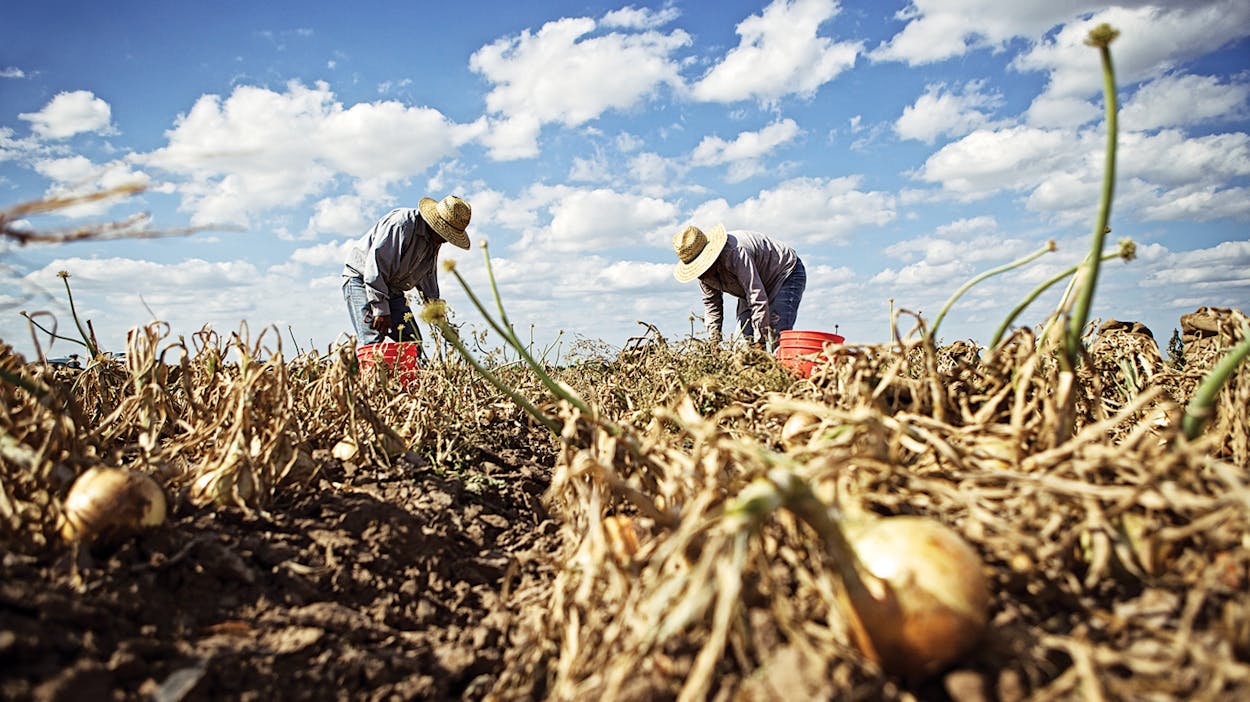In 1983, after more than 10 years of research, a Texas A&M University horticulturist named Leonard Pike created an onion that did not make people cry. This alone was revolutionary, but Dr. Pike also conferred another attribute upon his plant progeny: a single center.
Previous onion varieties had multiple centers and were a mess of interlocking circles when sliced, but the sweet Texas 1015 — named after the optimal planting date, Oct. 15 — would cut into perfect concentric circles. This meant that restaurants chains like Outback Steakhouse and Chili’s and food suppliers like Sysco could efficiently produce onion rings and, more important, people would want to eat them.
This pragmatic approach is at the heart of the Vegetable and Fruit Improvement Center at Texas A&M, which Dr. Pike founded in 1993 and is celebrating its 20th anniversary. The center, which is intended as a collaboration of science and industry, is now led by Bhimu Patil, one of Dr. Pike’s former students and a professor at A&M.
In a partnership between research and business, the 11 members of the advisory board, which includes representatives from the chemical company Monsanto and the grocery chains HEB and Kroger, identify the center’s priorities based on industry needs — namely, breeding fruits and vegetables that taste better, have more nutrients, tolerate heat and drought, and resist disease. More than 40 scientists, doctors and academics at the center incorporate these needs into research that includes crop management, plant physiology, human nutrition, pharmacology and sustainability. The combined effort can, in turn, help secure grants from agencies like the National Institutes of Health and the United States Department of Agriculture.
For a relatively small institution, the center has contributed a great deal to the produce aisles. It has bred about 40 cultivars, or new vegetable and fruit varieties, and identified 56 bioactive compounds that are important for health research and are worth an estimated $6.3 million. Before retiring in 2006, Dr. Pike created the maroon carrot, which has up to 40 percent more cancer-preventing beta-carotene. David Byrne, an A&M AgriLife Research scientist, released his 19th peach varietal, TexFirst, designed for Texas’ mild winters. Kevin Crosby, an A&M associate horticulture professor, is responsible for seven types of peppers, including the golden yellow mild habanero, which is low in capsaicin — the chemical responsible for a pepper’s heat.
The center has generated $1.10 million in royalty revenue for A&M from seed sales, and its most famous vegetable, the Texas 1015, has had an economic impact of about $1 billion since it was released in 1983, according to Agricultural Economics.
As the center celebrates 20 years, Dr. Patil said, it remains committed to its market-driven approach to crop improvement and consumption, which was the focus of a recent conference: “Produce for Health: The Intersection of Sustainability, Food and Nutrition Security, and Education.” Held at the AgriLife Center on A&M’s campus, the conference featured more than 25 speakers and attracted more than 200 attendees.
Dr. David L. Katz, the director and a founder of the Yale-Griffin Prevention Research Center, argued in his keynote address for the role of a plant-based diet in fighting the leading causes of death, including cancer and heart disease. “If you were told there was a drug safe for old and young with no side effects that was very cheap, and that taken daily would reduce chronic disease by 80 percent,” Dr. Katz said, “you’d call your doctor immediately for a prescription or you’d call your stockbroker.”
“But that drug already exists,” he said, referring to a healthy lifestyle with lots of fruits and vegetables.
“We’re facing health problems amounting to $30 billion dollars a year by 2025,” said Susan Combs, the state’s comptroller and former agricultural commissioner. “We need to invest in these high-value fields, and it’s clear that agriculture with clear nutritional health benefits is one of them.”
Research, she added, was part of the state’s diversification after the 1980s oil bust and brings a high return on investment.
Health also sells. To prove the point, Dr. Patil invited Emiliano Escobedo, the executive director of the Hass Avocado Board, established in Irvine, Calif., in 2002 to promote avocado consumption. The board invested in research to communicate the crop’s nutritional benefits to consumers. The result was the motto “Love One Today: naturally good fats, cholesterol free.” From 2002 to 2013, Hass avocado consumption in the United States increased to nearly 1.7 billion pounds from 484 million pounds.
“We wanted people to feel they’re getting more out of their $1 or $1.50,” Escobedo said.
After one speaker called for research to build consumer trust, Sekhar Boddupalli, Monsanto’s head of Global Consumer Research and Development, rose for his presentation. “Oh, wow. Having Monsanto follow a speech about trust. I wonder if that’s a setup,” he said. Dr. Boddupalli did not discuss genetic modification, for which his company is known. He instead focused on consumer disappointment with taste.
Improving taste, of course, along with health, is what the center is all about, Dr. Patil said. Recalling the Texas 1015, he noted that it contained reduced amounts of pyruvate, the tear-provoking compound known to fight cholesterol and cancer. But its success had helped change both habits and lives.
“People derive greater health benefits from mild onions they eat,” he said, “than from more nutrient-rich onions they don’t.”








